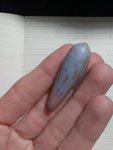fubar57
General
Very nice
Follow along with the video below to see how to install our site as a web app on your home screen.
Note: This feature may not be available in some browsers.
Ad: This forum contains affiliate links to products on Amazon and eBay. More information in Terms and rules

 Proof that I must have built it correctly.
Proof that I must have built it correctly.




